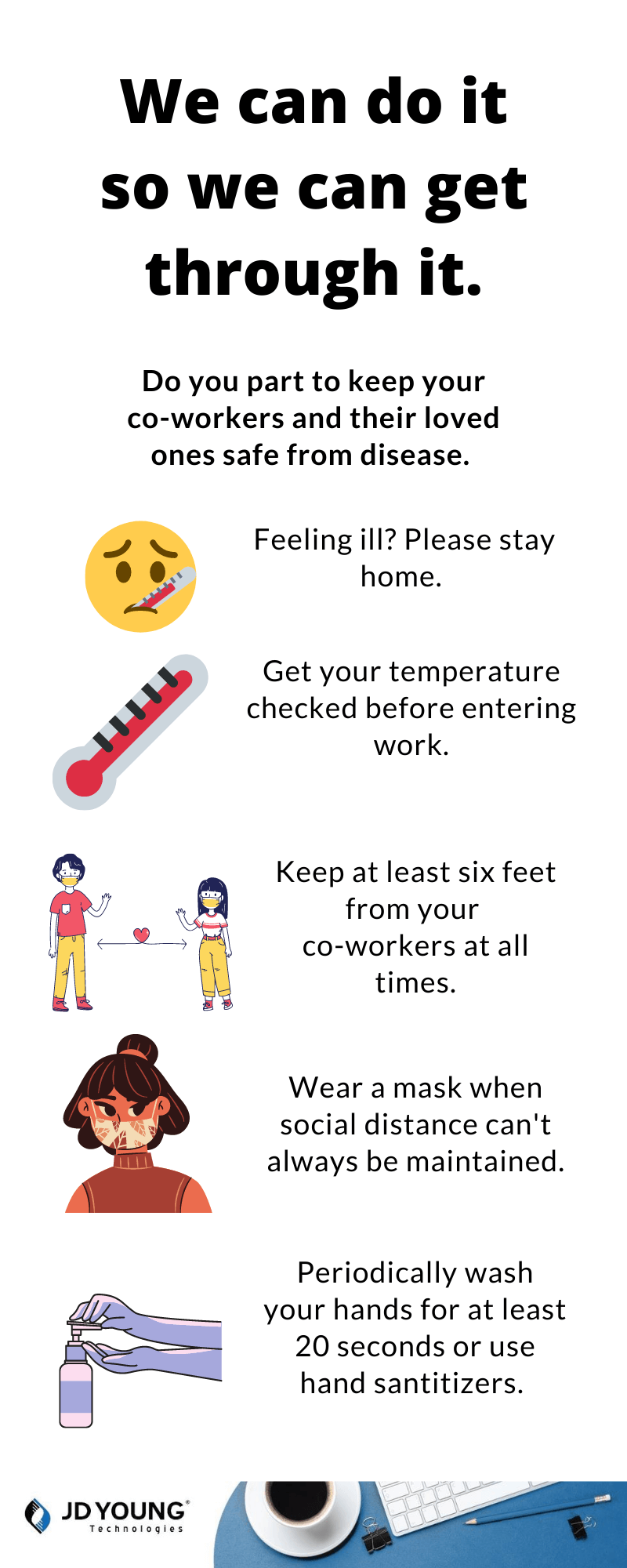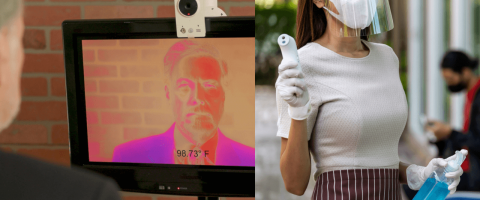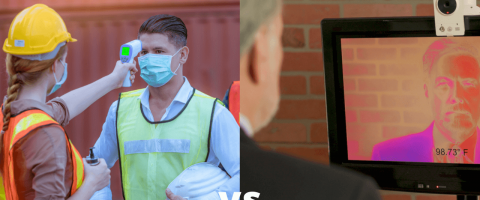Prefer to listen to this article?
What efforts are required to make your employees feel confident enough to return to work following the lifting of a lockdown?
The New Normal
Many wonder when life will return to normal—a time before Coronavirus endangered the health of millions of people all over the country and world. As they wait for an effective treatment or for the full effectiveness of the vaccines to lower infection rates, there is another group: those who realize that there’s no going “back”—only going forward into the “new normal.” There’s a strong likelihood that your own team is among those who share this understanding. Because this is the case, welcoming your employees back requires a dedication to safety they can trust.
The Importance of Your Company Messaging
To imbue your workers with the necessary confidence to return to work, your company’s messaging regarding Coronavirus must be proactive. Your tone should relay that your company is dedicated to doing everything necessary to create a safe workspace for everyone. This message must remain consistent throughout all of your leadership in order to be believed—from C-level executives on down. This means that all of your leaders not only need to convey your company’s dedication to safety, but they themselves must comply with all safety ordinances. No one is above the protocols if they are to be trusted and upheld for the sake of worker confidence. Now that your dedication to worker health is cemented in your company’s ethos, it's time to apply concrete safety protocols.
Temperature Screening for Admission
Instantaneous Coronavirus testing doesn’t currently exist and other screening options are time-consuming and invasive. While this is the case, one of the most consistent and easily detectable symptoms of a Coronavirus infection is a fever. Because of this, screening the bodily temperature of every worker before they enter the workplace can substantially reduce the likelihood of transmission among your team members. This action can also significantly bolster the confidence of your employees that return to work. There are a few different ways to conduct such temperature screenings.
Manual Human-Conducted Temperature Screenings
Presently, one of the most common means of screening employee temperatures upon entry is a person manually taking employee temperatures before they’re permitted entry. Some standard guidelines include:
- This person may be a company health specialist, an existing employee, or you may opt to hire a new person for this role.
- Ideally, they should don adequate personal protective equipment (PPE) in the form of a mask, gloves, and possibly eye protection due to their proximity to potentially infected employees.
- The screening area should preferably be somewhat private so as to increase the confidentiality of employee temperatures and limit employee exposure.
- They should instruct employees entering the screening area to remain at least six feet apart from one another.
- They should use a no-contact thermometer that they should first use on themselves upon arriving to work.
- The names of employees exhibiting a fever should be referred to the company’s HR department and that individual should be given additional instructions regarding when they can return to work.
Automated Device-Conducted Temperature Screenings
An increasingly popular method of temperature screening is via automated devices.
- These devices can be mounted on walls or left freestanding on kiosk-like platforms wherever the company chooses to screen employees.
- These devices are outfitted with highly accurate no-contact, tamper-resistant infrared thermometers—allowing for humanless, contactless interaction.
- Many of these device models are also equipped with facial recognition capabilities for the sake of employee identification or the enforcement of mask-wearing compliance.
- Some models can be equipped to deliver audible notifications to employees and additional instructions in case of a detected fever.
- Some devices can inform the HR departments of employees identified as having a fever or not abiding by mask compliance protocols.
(For additional questions regarding automated temperature screening devices, you’re invited to learn more about these technologies and speak with a business solutions expert from JD Young Technologies.)
Mask-Wearing in the Workplace
Though screening employees for the presence of a fever can go a long way toward keeping workers safe, a summary from the Centers for Disease Control revealed that as much as two-thirds of all Coronavirus transmissions in the US came from people not exhibiting symptoms. Because the most common method of transmission is through the inhalation of droplets and vapors exhaled from infected individuals (symptomatic or asymptomatic), the wearing of masks is crucial to limiting the rate of infection within the workplace. By proceeding as though every person is possibly carrying the virus, this can greatly decrease the likelihood that anyone becomes infected.
Consistent Compliance & Comfort
While the default rule for mask compliance should ideally be that all employees, regardless of department, should be required to wear face masks, there should be times when a mask is not required—such as when six feet of distance can be observed from others over an extended duration of time.
Display of Safety
In addition to providing genuine protection to employees, the enforcement of mask-wearing from every level strengthens your company’s messaging about safety to otherwise-anxious employees. When every employee—from owners and CEOs to service personnel and administrative staff—wears a mask, this helps uneasy or vulnerable employees feel that their employer supports their right to work in a safe environment and personally cares for their well-being and the health of their loved ones.
Coming Together Over Social Distancing
Because Coronavirus is most likely to be spread through the coughed or exhaled droplets from infected individuals, keeping employees out of harm’s way calls for social distancing measures. To best limit the spread of the virus, it’s recommended to enforce a social distancing protocol requiring everyone to remain at least six feet from one another at all times. When this distance cannot be maintained due to the nature of some tasks, mask-wearing should be especially enforced.
Fostering Cleanliness & Vigilance
The new normal your employees expect is a dedication to safety in the form of cleanliness. Protecting your employees makes them feel valued. While the main methods of displaying how much you value your employees are with the health protocols you enact, a secondary way of doing this is by helping them in their efforts to remain safe. For this reason, consider placing hand sanitizer stations at periodic locations, equip employees with any masks they need, or sanitizing wipes to make it easier for them to disinfect workspaces. Fostering cleanliness is yet another means of fostering confidence in your workers and to make them feel that you value them as individuals. If they don’t feel safe, they may not want to return at all.
Help Keeping Your Dedication Top of Mind
To assist your company in keeping safety top of mind, we’ve developed the following infographic poster for you to print and display in your workplace. Not only does this graphic act as a reminder to your employees to remain vigilant, but it also reminds them of your dedication to the health and safety of your workers as well as their loved ones.
Download the Infographic Poster Here







